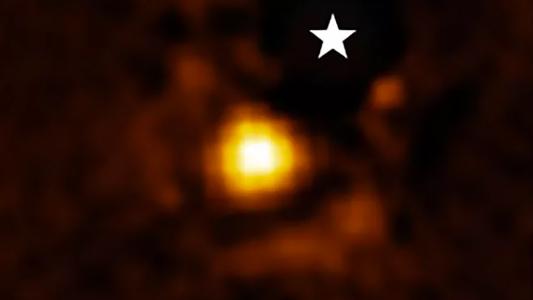Imagine two towns on two opposite sides of a mountain. People from these towns would probably have to travel all the way around the mountain to visit one another. But, if they wanted to get there faster, they could dig a tunnel straight through the mountain to create a shortcut. That’s the idea behind a wormhole.
A wormhole is like a tunnel between two distant points in our universe that cuts the travel time from one point to the other. Instead of traveling for many millions of years from one galaxy to another, under the right conditions one could theoretically use a wormhole to cut the travel time down to hours or minutes.
Because wormholes represent shortcuts through space-time, they could even act like time machines. You might emerge from one end of a wormhole at a time earlier than when you entered its other end.
While scientists have no evidence that wormholes actually exist in our world, they’re good tools to help astrophysicists like methink about space and time. They may also answer age-old questions about what the universe looks like.
Fact or fiction?
Because of these interesting features, many science fiction writers use wormholes in novels and movies. However, scientists have been just as captivated by the idea of wormholes as writers have.
While researchers have never found a wormhole in our universe, scientists often see wormholes described in the solutions to important physics equations. Most prominently, the solutions to the equations behind Einstein’s theory of space-time and general relativityinclude wormholes. This theory describes the shape of the universe and how stars, planets and other objects move throughout it. Because Einstein’s theory has been tested many, many times and found to be correct every time, some scientists do expect wormholes to exist somewhere out in the universe.
But, other scientists think wormholes can’t possibly exist because they would be too unstable.
The constant pull of gravity affects every object in the universe, including Earth. So gravity would have an effect on wormholes, too. The scientists who are skeptical about wormholes believe that after a short time the middle of the wormhole would collapse under its own gravity, unless it had some force pushing outward from inside the wormhole to counteract that force. The most likely way it would do that is using what’s called “negative energies,” which would oppose gravity and stabilize the wormhole.
But as far as scientists know, negative energies can be created only in amounts much too small to counteract a wormhole’s own gravity. It’s possible that the Big Bang created teeny, tiny wormholes with small amounts of negative energies way back at the beginning of the universe, and over time these wormholes have stretched out as the universe has expanded.
Just like black holes?
While wormholes are interesting objects to think about, they still aren’t accepted in mainstream science. But that doesn’t mean they’re not real – black holes, which we astrophysicists know abound in our universe, weren’t accepted when scientists first suggested they existed, back in the 1910s.
Einstein first formulated his famous field equations in 1915, and German scientist Karl Schwarzschild found a way to mathematically describe black holes after only one year. However, this description was so peculiar that the leading scientists of that era refused to believe that black holes could actually exist in nature. It took people 50 years to start taking black holes seriously – the term “black hole” wasn’t even coined until 1967.
The same could happen with wormholes. It may take scientists a little while to come up with a consensus about whether or not they can exist. But if they do find strong evidence pointing to the existence of wormholes – which they may be able to do by looking at odd movements in star orbits – the discovery will shape how scientists see and understand the universe.
This article is republished from The Conversation under a Creative Commons license. Read the original article.






